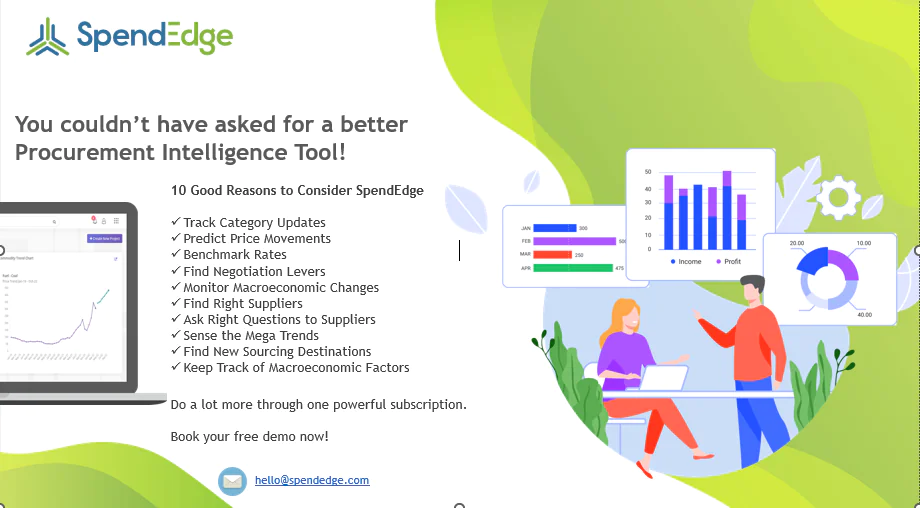By: Manpreet Kaur
Key takeaways
- Tailored Supply Chain Processes: Supply chain segmentation involves categorizing customers, products, and channels into distinct groups based on their specific characteristics and requirements, allowing businesses to align their supply chain processes more precisely for improved performance and responsiveness.
- Enhanced Operational Efficiency: By segmenting customers, products, channels, suppliers, and geographic regions, organizations can optimize inventory levels, streamline production processes, and adapt logistics to meet specific needs, thereby enhancing overall supply chain efficiency and reducing costs.
- Advanced Technology Integration: Leveraging advanced technology and data analytics is crucial for effective supply chain segmentation. Robust supply chain management systems enable real-time tracking and analysis, facilitating better decision-making for each segmented area.
- Improved Collaboration and Communication: Fostering collaboration and communication across different segments of the supply chain ensures that teams responsible for customer service, production, logistics, and procurement are aligned, leading to a more responsive and agile supply chain.
In today’s dynamic business landscape, supply chain management plays a crucial role in the success of organizations. One strategy that has gained significant traction in recent years is supply chain segmentation. This approach involves tailoring different aspects of the supply chain to meet the unique needs and demands of various customer segments. Mastering supply chain segmentation can enhance operational efficiency, reduce costs, and improve customer satisfaction. In this article, we will explore the key principles and strategies to effectively implement and master supply chain segmentation.
Understanding Supply Chain Segmentation:
Supply chain segmentation involves categorizing customers, products, or channels into distinct groups based on their specific characteristics and requirements. By recognizing the diverse needs of different segments, businesses can align their supply chain processes more precisely, leading to improved performance and responsiveness.
Key Strategies for Mastering Supply Chain Segmentation


Customer Segmentation:
Identify and categorize customers based on their purchasing behavior, preferences, and requirements. By understanding the unique needs of each customer segment, companies can tailor their inventory levels, order fulfillment processes, and communication strategies to enhance customer satisfaction.
Product Segmentation:
Classify products based on attributes such as demand patterns, shelf life, and complexity. This allows businesses to optimize inventory levels, streamline production processes, and improve overall supply chain efficiency. High-value and high-demand products may require different handling compared to slower-moving items.
Channel Segmentation:
Different distribution channels often have distinct requirements. Whether selling through e-commerce, brick-and-mortar stores, or a combination of both, segmenting channels enables organizations to adapt their supply chain strategies accordingly. This might involve different packaging, order fulfillment methods, or transportation solutions.
Supplier Segmentation:
Apply segmentation principles to suppliers by categorizing them based on factors such as reliability, lead times, and quality. This allows organizations to develop tailored relationships and strategies with each supplier segment, optimizing the procurement process and mitigating supply chain risks.
Geographic Segmentation:
This segmentation strategy recognizes that different regions or locations may have unique characteristics, demands, and supply chain requirements. By tailoring supply chain processes to specific geographic regions, companies can better meet the needs of local customers, optimize logistics, and enhance overall efficiency.
Information and Technology Integration:
Leverage advanced technology and data analytics to integrate information seamlessly across the supply chain. Implementing robust supply chain management systems enables real-time tracking and analysis, facilitating better decision-making for each segmented area.
Collaboration and Communication:
Foster collaboration and communication between different segments of the supply chain. Ensure that teams responsible for customer service, production, logistics, and procurement are aligned and share relevant information. This facilitates a more responsive and agile supply chain.
Request a proposal of our services at SpendEdge to enhance your supply chain segmentation and procurement process
Conclusion
Supply chain segmentation is a dynamic process that requires a deep understanding of customer, product, and channel dynamics. By implementing these strategies, businesses can unlock the full potential of supply chain segmentation, enhancing operational efficiency, reducing costs, and ultimately delivering greater value to customers. As the business landscape continues to evolve, organizations that master supply chain segmentation will be better positioned to thrive in a competitive marketplace.

Get a free trial of our professional services and see how it helps your business
Author’s Details
Manpreet Kaur
Assistant Manager Presales – Sourcing and Procurement Intelligence
Manpreet is a presales specialist at Infiniti Research and has expertise in sales, business strategy execution, and innovative solution design. She is actively involved in supporting clients from F&B, CPG, Healthcare, Pharma, Chemicals, BFSI, Oil & Gas and Automotive sectors.




